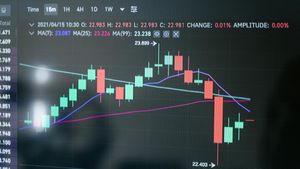The current job market presents a mixed picture as the number of Americans filing for unemployment benefits has recently dropped more than anticipated. The latest figures from the Labor Department reveal initial claims decreased by 16,000, settling at 207,000 for the week ending January 25. This reduction indicates relatively low instances of layoffs and suggests some steadiness within the job market.
Despite the advantageous drop, the overall sentiment among consumers is deteriorative. A survey conducted by the Conference Board indicates the proportion of consumers perceiving jobs as "plentiful" has reached its lowest point in four months. Simultaneously, those who see employment opportunities as "hard-to-get" have expressed the most pessimism since October. These shifts reflect growing concerns among the workforce about future job security.
The broader economic picture shows businesses are becoming more cautious about hiring amid tight monetary policy and uncertainty surrounding new government actions. Companies are postponing hiring decisions as they await clarity on policies from the President's administration, including possible tax cuts and trade tariffs, to understand their prospective impacts on the economy. Analysts have pointed out these policy directions could create inflationary pressures.
Meanwhile, the Federal Reserve has held the overnight interest rate steady within the range of 4.25%-4.50%. This decision follows the Federal Reserve’s substantial rate decreases totaling 100 basis points since September, marking the start of its policy easing campaign. Notably, the Fed's latest policy statement no longer mentions any significant strides toward its 2% inflation goal, hinting at underlying market hesitancy.
Continuing unemployment claims, which serve as another key indicator of job market health, also saw a decrease of 42,000, bringing the total to 1.858 million for the week ending January 18. While this decline may sound promising, it concurrently highlights the decreasing number of job opportunities available for those seeking work. This metric covers the time frame during which the government collects data to calculate the unemployment rate, nominally at 4.1% as of December.
Given the economic conditions, the interplay between policy decisions, consumer sentiment, and employment metrics presents complex challenges for both job seekers and employers. With companies scaling back hiring practices and consumers feeling increasingly uncertain about job prospects, the current job market narrative encapsulates a period of transition laden with apprehension. The juxtaposition of decreasing unemployment claims and pessimistic consumer forecasts suggests the labor market is still trudging along, albeit with significant headwinds.
Moving forward, experts anticipate potential fluctuations as the economy adjusts to new policies and consumer confidence hopefully rebounds. While the slightly favorable unemployment claims statistics might suggest stability, the overall sentiment and remaining challenges paint a more nuanced picture of today's economic environment.



